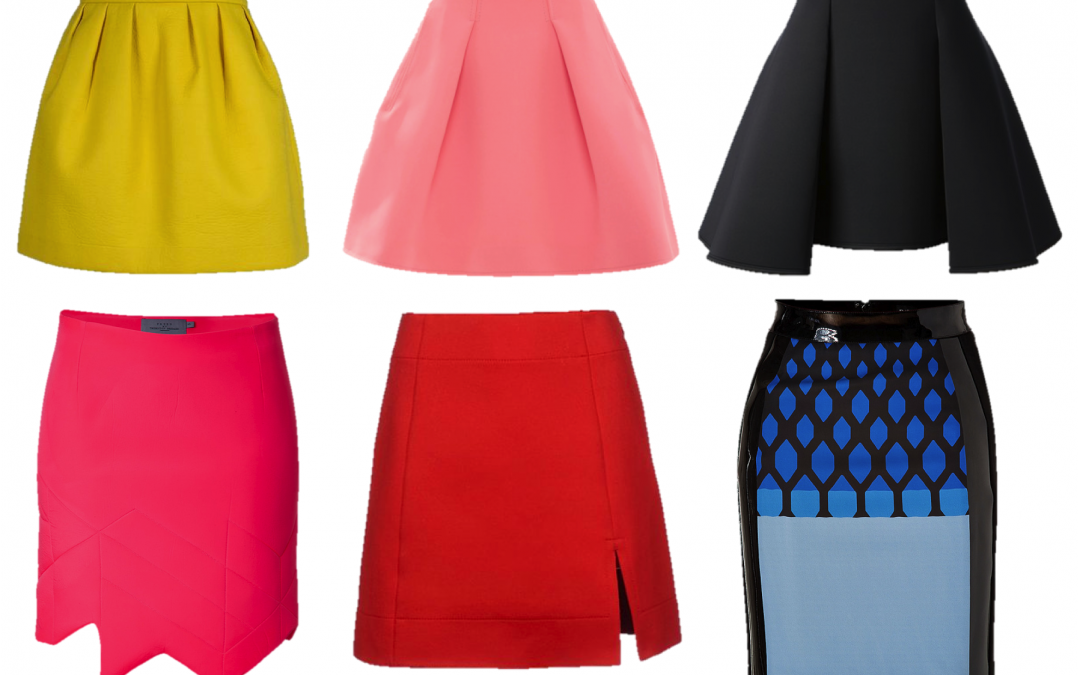
by Kosher Casual Team | Sep 10, 2017 | Fashion Philosophy, Modest, modest clothing
In talking about modesty and the choice people make to dress modestly, there are various reasons that people cite as their impetus to dress modestly. A very common one is religious beliefs. Through the many different religions or spiritual value systems, dressing modestly is about uplifting yourself to higher spiritual realms and lessening one’s dependence on the physical world. However, it is very interesting how religions define their own guidelines. Comparing Buddhism, Islam, Christianity, Hinduism, and Judaism, we have found many similarities as is expected, but also a few differences. Where do these differences come from? How do people reconcile these differences?
Buddhism dictates that dressing modestly is a purifying quality for everyone, not just for monks. The guidelines of Buddhist dress is less focused on the physical requirements and more on the type of clothing. The cloth should be simple, undyed fabrics that wrap around the body and do not fasten or have buttons but rather are knotted. In the Buddhist religion, the clothing should mainly represent that one is peaceful, restrained, committed to the holy life and is harmless to all beings.
In Christianity, because there are so many sects the dress code can change from suggestive to strongly enforced with clear guidelines. In general, the Christian stance towards modest dress is to pay attention to the clothing you choose because your clothing should cover your body, not reveal or imply the shape of your body. Clothing should not be worn to draw attention but to rather dissuade the focus on the physical body and encourage the inner beauty to become apparent. There are sects that suggest physical markers as modest, such as covering one’s shoulders and upper arm, wearing skirts or shorts to at least knee length and avoiding shirts with low necklines. These qualifiers help identify an idea of modest dress for a Christian.
Hinduism has taken similar modest concepts as other religions but much of the way Hindu’s dress today is affected by factors such as class, geographic location, and political influence. Over time, the standards of modern dress have fluctuated and therefore the dress that is most iconic to Hindu religion is the Sari, worn by women and the Dhoti, worn by men. These two items mainly cover the legs, shoulders and a piece of the cloth that wraps around the midriff, although may sometimes show parts of the waist. The emphasis here is put on the cloth covering up the body as a symbol of grace. Again, an example of how modest dress is defined by a value system with strong cultural influences.
In the Muslim religion, as in many other religions, the stringency of modest dress varies between communities or enclaves of practicing Muslims. The dress code can be very stringent as with the Naqib, the headdress that covers the face to the Hijab, which only covers the hair and part of the face. Both worn by women in an effort to avoid drawing attention and because the prophet Muhammad instructed his people to draw their head coverings over their chest. This instruction explains the length of the cloth that is used to cover them. In Islam, there is also a standard expected of men to keep themselves covered from their navel to their knees, but even a shirtless man would be seen as inappropriate in many situations and looked down by his fellows. All these restrictions are made in the same effort, to remove the apparent emphasis on physicality and create an environment of spiritual growth.
The last example, although indeed there are more, is Judaism. In stricter Orthodox or Ultra-Orthodox Judaism, there is an outline for the standards of modest dress from which within a wide range of standards exist. For women, it involves wearing shirts from the collarbone to the elbow, and for the lower half, only skirts are allowed and they must be from below the knee to the ankle. The men also are expected to dress in shirts with pants and some communities even expect a suit Jacket to be worn with a hat. Modern Orthodoxy, has more relaxed definition which reflect more of a spirit of modesty rather than strictly defined guidelines.
These expectations of dressing modestly are all just an attempt to create something tangible. The goal, of course, is to elevate oneself through the seeking of a spiritual life. In addition to the spiritual aspect, it can help to create stronger bonds between man and his(her) fellow, developing relationships based on internal beauty versus external beauty.
There is no doubt these guidelines are not true for everyone in every religion, there are variations and personal choices people make in how to follow each guideline. Surely, we have failed to mention certain religions that have modest dress ‘rules’ but this piece is just to offer some insight into the similarities and the differences. Feel free to share the standards you follow in your religion below.

by Kosher Casual Team | Aug 20, 2017 | Dress Code, Fashion Philosophy, modest clothing, Modest Fashion
As we approach the end of the summer and the new school year, anyone with children is starting to think about all the school supplies and books they need to buy. But, in addition to the typical and necessary things children need for school, new clothing somehow always finds its way to the shopping list.
It seems as though the clothing is becoming smaller and skimpier and as such, encouraging our children, especially for school, to choose modest items is proving more difficult. Because of this, many schools are opting to establish dress codes or even uniforms. Although this seems like a great solution to a widespread problem, it actually creates many challenges for parents, students, and teachers.
The dress code, which is often the first choice, is great because it allows the school to set guidelines while maintaining the ability for students to express themselves and be unique. A dress code can encourage unity among students, greater productivity in the classroom, save time in the morning and instill a real world appropriate vs. non – concept. On the other hand, there are many challenges to implementing a dress code. The biggest problem with a dress code is the inability to enforce rules uniformly. Often teachers must make judgments based on rules that can seem unfair to students. Especially with rules like the fingertip rule (where shorts and skirts should rise no higher than the tips of one’s finger), which varies greatly based on a person height and length of their arm or legs. Leaving it up to a teacher to decide what is ‘too tight’ can even leave students feeling picked on and judged.
Overall, dress codes work to ensure that the school environment remains conducive to learning and while there may be obstacles to achieving that, it is the smallest and simplest way to maintain control.
What do you remember from dress codes when you were in school? How does that compare to the dress codes in our children’s schools today?

by Kosher Casual Team | Aug 2, 2017 | Fashion Philosophy, Modest, modest clothing, Modest Fashion, Uncategorized
Being well known in Hollywood or in the entertainment business comes with a harsh price, having expectations placed on you to be and look a very specific way. That is why women (specifically women for this post) that do choose to cover up and stay ‘modest’ deserve a great deal of encouragement and recognition.
Identifying these women as leaders and example of courage and leadership is only fair because they are simply working harder than any of us to go against the grain and keep their clothing modest. The women chosen in this post were chosen for more than just their actual clothing, they are all beautiful and carry themselves modestly and without the typical flashy Hollywood persona, we have come to know.
- Adele – a class act that is famous for her silly personality and classy disposition. Her modesty comes through in her behavior more than her physical clothing, even though her wardrobe is quite modesty. The added element of her love for her body type, despite many critiques, makes her a great candidate for a top modest and wholesome celebrity.
- Mayim Bialik – famous for her role in Blossom and the more recent Big, Bang Theory, Mayim has always portrayed herself with the utmost respect and this came from the roles she plays on the screen and the way she dresses off the screen. Her commitment to her values is obviously a priority all the while maintaining her brains and her value as an actor in Hollywood.
- Kate Middleton – the epitome of class and style. Kate holds an honorable position that has years of heritage and tradition, although that alone is not a reason to go against the modern fashion styles of her companions and dress more provocatively. And yet, her style is always modest and always beautiful.
- Audrey Hepburn – the ever iconic and ultimately remembered for her tasteful modesty and humility, was the ultimate example of modesty. Audrey Hepburn, quoted once as saying that the most distasteful thing she ever did on camera was let her Tabby, named Cat, out of a cab into the rainy streets of New York!
- Zooey Deschanel – known for her nerdy and bubbly persona, she rocks the alt-indie scene and carries the hit show New Girl with a great deal of modesty and charm. Usually seen in flowy skirts and high-collared shirts, which add to her seemingly down to earth approach to stardom. Another character that known more for her modest presence rather than her wardrobe alone. She is a perfect pick for this list.
In a world where celebrities and reality TV stars are stripping off their clothes at any possible opportunity, it’s really refreshing to see people choosing to behave differently. Although dressing modestly in a layman’s world may seem nerdy, in the world of celebrities it can often be seen as rebellious. Despite that, choosing modest clothing and choosing to keep covered, can often be more revealing, forcing people to look past externalities and understand each other based on internal characteristics.
Who are your favorite famous personalities that keep modest and manage to stay in the groove?

by Kosher Casual Team | Jul 20, 2017 | Dress Code, Fashion Philosophy, modest clothing, Modest Fashion
Women who choose to follow a religious or cultural dress code are often grappling with what defines modest dress as, well, modest. Although different cultures may vary on what is considered modest, there are certain standards that are accepted as modest dress.
Modesty is a way of life. It is about choosing to keep things private that today have been exploited. That means for some women, trying to dress modestly is about minor technicalities like covering up past their elbows and knees or concealing their ankles. However, for other women, it may mean avoiding sheer fabrics or very tight revealing clothing. The concept of modesty is an important and personal one, and therefore different opportunities to express oneself modestly should be available.
Modesty and chastity are developed from within oneself, yet expressed outwardly. People as well should dress in ways that reflect their modest choices and beliefs and refrain from outwardly judging others’ choices in dress or how their modesty is conveyed.
Have you fallen into that trap of judging others for not being modest enough? Or bending the standards of modest dress? Share how you personalize the experience of modest dress below, I’d love to hear from all of you.

by Kosher Casual Team | Jul 13, 2017 | Fashion Must-Haves, Fashion Philosophy, modest clothing, Skirts
Dressing modestly and staying fashionable means finding clothing that fits your body well, just as it would for any woman that wants to look modern and stylish. That means knowing your body shape and finding skirts that flatter your natural curves or lack thereof!
When it comes to skirts, there are a variety of designs to choose from, including A-line, high-waisted, form-fitting, pencil skirts and more. Finding the right style starts with looking at the different types of body shapes.
Apple shape which generally means you have a slim lower body and carry your weight around your middle works best with high-waisted skirts. The high waistband will hit the smallest part of the torso and mask the mid-section. If you can find a skirt that is flouncy or has pleats than that will only add more to the total image and help give a lengthened look to the body shape.
The Banana shape (similar width for the waist, hip, and shoulders) does best with form-fitting skirts. Body-conscious skirts with a fun or loud pattern compliment this body type. Keep the shape of your skirts narrow and that will allow your natural curves to speak on their own.
The hourglass is that iconic shape that looks so great in a long pencil skirt. This body shape with a heavier bottom and a well-defined waist has a skirt specifically designed for her. Skirts with a peplum look especially great as they draw all the attention to your waist and give a perfect space for your lower half. Don’t get caught up in the office style of these pencil skirts, patterns and textured fabrics allow you to take advantage of all the length.

by Kosher Casual Team | Jul 4, 2017 | Dress Code, Fashion Philosophy, Kosher Casual, Modest, modest clothing, Modest Fashion
It seems there are many misconceptions about women who choose to dress modestly. Especially with fashion trends implying that modest clothing is simply that, a trend. Of course, women are and have always been under scrutiny for showing too much skin or not showing enough skin, which goes to show that women cannot escape the natural tendency for men and strangers to judge a woman’s dress.
Often dressing preferences are dictated by mood, weather or even a lack of clean laundry! Recently there are more and more women favoring clothing and designs that are considered modest, baggy sweaters, long maxi skirts and those Peter Pan collared button ups. Many of these trends became popular simply because designers were lacking a plunging neckline in their lines.
Feminism has taken the brunt of the blame when it comes to emerging modest trends although it’s easy to prove that fashion has had moments of modest influence almost every few decades. Feminists are feminists because of the need and outstanding lack of equality that exists for women who work or play as hard as men. Dressing modestly, therefore, would have nothing to do with Feminism and rather be a choice made by women to empower themselves. Actively disobeying some unspoken rule about how women should dress or behave is likely the last reason a woman would choose to dress immodestly.
What drives you to dress modestly? Share below in the comments.






